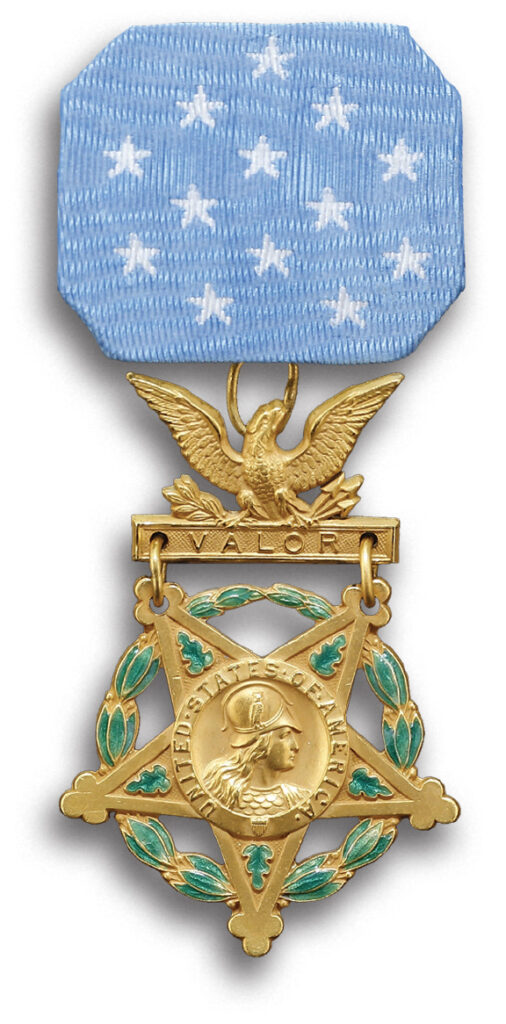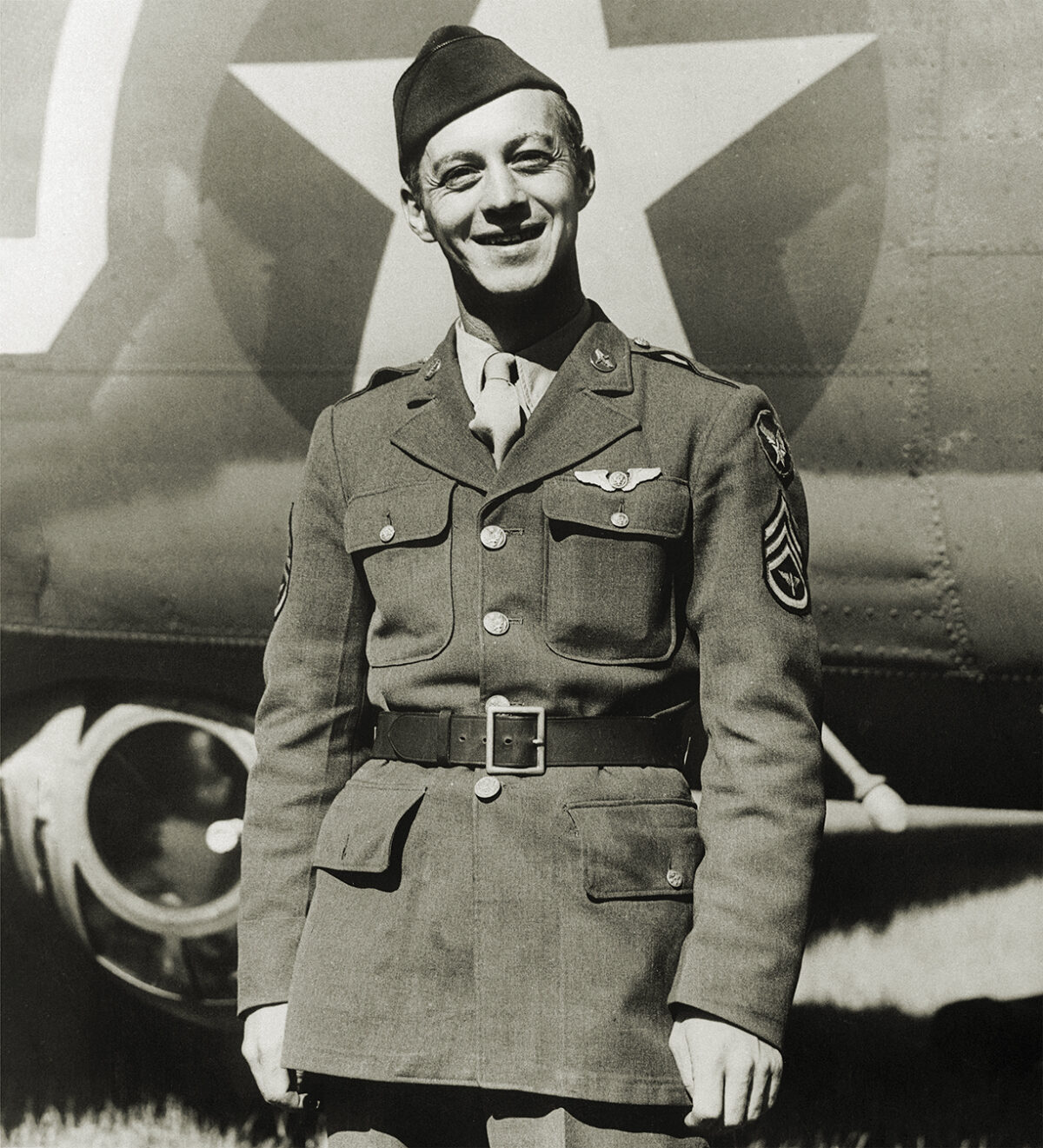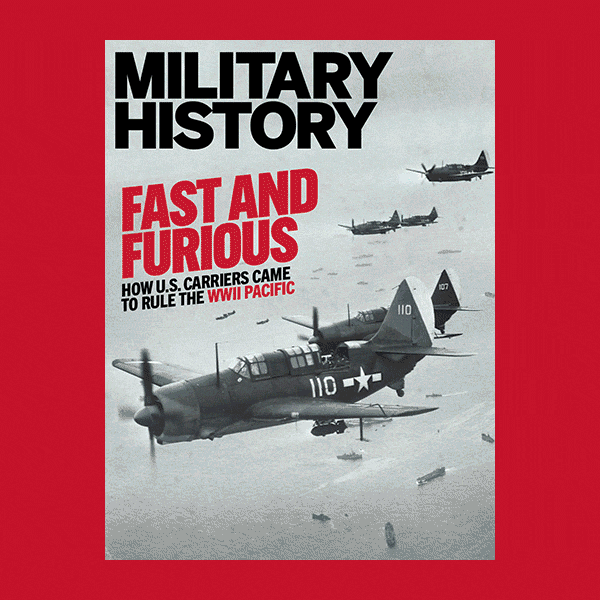Sergeant Maynard Harrison “Snuffy” Smith was not your typical hero.
“From the time he entered the Air Force he had been in some kind of trouble over one petty matter or another,” wrote Army Pvt. Andy Rooney, then a Stars and Stripes correspondent. “‘Snuffy’ was, in fact, known by the 14 other inhabitants of his Nissen hut by an Army phrase for which there’s no socially acceptable replacement.” Smith was said to have earned the nickname “Snuffy” due to his general obnoxiousness and unwillingness to be a team player, traits he shared with the then-popular comic strip character Snuffy Smith.

By mid-1942 Smith, then 31 years old, had been married and divorced in his native Michigan and was behind in child support payments. A judge gave him a choice: Go to jail or enlist. Snuffy picked the latter and joined the Army Air Forces that August.
In part due to his slight stature, the 5-foot-6, 130-pound Smith qualified as a ball turret gunner on the Boeing B-17 Flying Fortress. But for six weeks after he’d been posted to the 306th Bombardment Group at RAF Thurleigh airfield in south-central England no crew would take the “undesirable” sergeant.
Finally, on May 1, 1943, Smith flew his first mission, against the German U-boat pens at Saint-Nazaire, France. The raid itself went well, but en route back to England the off-course B-17 formation strayed too close to German-occupied Brest and was immediately targeted by anti-aircraft fire and attacked by German fighters.
Hits to Smith’s bomber ruptured gas tanks, set its midsection ablaze, destroyed its internal communications and knocked out the electrical controls of the ball turret. Snuffy climbed up into the fuselage to find a massive fire in the radio room ahead of him and another in the tail section. With no word from the cockpit, the radioman and two waist gunners decided the plane was doomed and bailed out.
“The smoke and gas were really thick,” Smith recalled. “I wrapped a sweater around my face so I could breathe, grabbed a fire extinguisher and attacked the fire in the radio room. Glancing over my shoulder at the tail fire, I thought I saw something coming, and I ran back. It was the tail gunner, painfully crawling back, wounded. He had blood all over him.”
Smith did what he could for the man, then returned forward to fire at the persistent German planes from the abandoned waist guns and fight the blaze. For 90 minutes he alternately tended the wounded tail gunner, fired the waist guns and tossed unexploded ammunition and all else flammable through holes in the fuselage. He contained the fire enough that the B-17 was able to limp back to the nearest airfield in England, though it broke in half when the tail wheel touched down. The ground crew counted more than 3,500 bullet and shrapnel holes in what remained of the bomber. One propeller was splintered, its flaps were destroyed, the radio room gutted, the left wing gas tank destroyed and its nose shattered.
Smith and the other five men still aboard the B-17 survived, but 75 fellow airmen who’d participated in the raid, including the three who had bailed out of Smith’s plane, had been killed or were missing, and another 15 were wounded.
On July 12 the men of the 306th gathered on the tarmac at RAF Thurleigh. With a band in place, 18 bombers ready for a flyover and two radio networks ready to broadcast, all that was missing was Smith. He was found on KP duty, scraping off breakfast trays. His mates soon had him cleaned up and escorted him to the tarmac, where Secretary of War Henry L. Stimson draped Snuffy Smith with a Medal of Honor.
This story appeared in the 2023 Summer issue of Military History magazine.
historynet magazines
Our 9 best-selling history titles feature in-depth storytelling and iconic imagery to engage and inform on the people, the wars, and the events that shaped America and the world.







